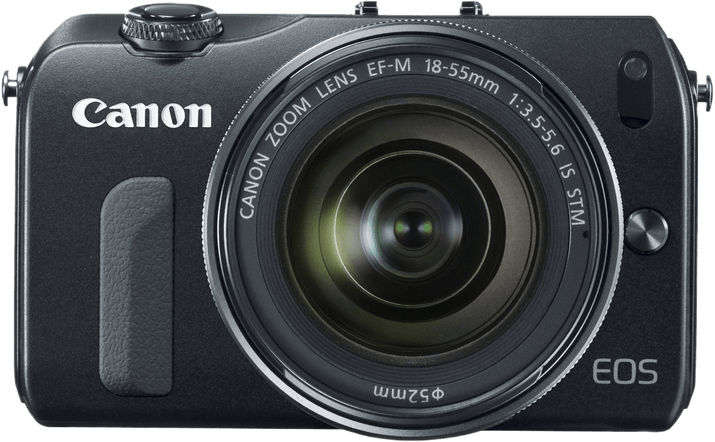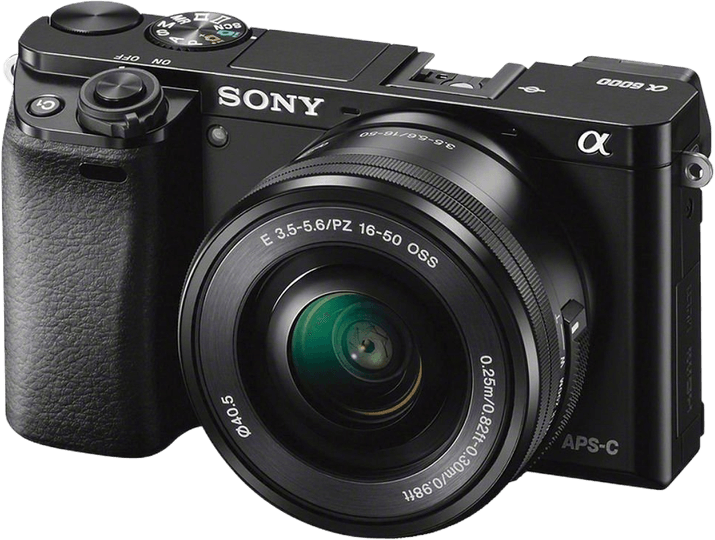Canon EOS M vs Sony a6000 Comparison
Canon EOS M

Sony a6000

The Sony a6000 emerges as the winner with a score of 57/100, compared to the Canon EOS M‘s 44/100. Both cameras share similarities as mirrorless cameras, announced in 2014 and 2012 respectively, with a launch price of $799 each. The Sony a6000 outperforms the Canon EOS M in various aspects, contributing to its higher score.
However, the Canon EOS M has its advantages, such as being lighter (298g) and smaller (109 x 66 x 32mm) than the Sony a6000 (344g and 120 x 67 x 45mm). This makes the Canon EOS M more portable and easier to carry around.
Taking into account the scores and specifications, the Sony a6000 is generally a better camera than the Canon EOS M. Nevertheless, the Canon EOS M’s compact size and lighter weight may appeal to those prioritizing portability.
Canon EOS M vs Sony a6000 Overview and Optics
The Sony a6000 outperforms the Canon EOS M in optics, scoring 67/100 compared to the Canon’s 42/100. Both cameras share some common specifications, such as having a CMOS sensor, an APS-C sensor size, and no image stabilization. However, there are key differences that contribute to the Sony a6000’s higher score.
The Sony a6000 has a 24.3-megapixel resolution, providing more detail in images compared to the Canon EOS M’s 18 megapixels. Additionally, the Sony a6000 has a faster shooting speed of 11 frames per second (fps), allowing for better capture of fast-moving subjects compared to the Canon’s 4.3 fps. The Sony a6000 also has a higher DXOMARK score of 82 for its sensor, indicating better image quality and performance than the Canon EOS M’s score of 65.
The Canon EOS M, however, does have a few advantages over the Sony a6000. The Canon EF-M lens mount offers compatibility with a wider range of lenses, providing more flexibility and options for photographers. Furthermore, the Digic 5 processor in the Canon EOS M is known for its reliability and consistent performance.
Taking these factors into account, the Sony a6000’s superior resolution, shooting speed, and sensor performance make it the better choice for photographers seeking top-notch optics. On the other hand, the Canon EOS M’s lens compatibility and reliable processor may appeal to those who prioritize versatility and consistency in their photography.
Canon EOS M vs Sony a6000 Video Performance
The Sony a6000 outperforms the Canon EOS M in video capabilities, with a score of 56 out of 100 compared to the Canon’s 43. Both cameras share some common specifications, such as Full HD maximum video resolution and 1920 x 1080 maximum video dimensions. However, there are differences that make the Sony a6000 the superior choice for video capture.
One of the main advantages the Sony a6000 has over the Canon EOS M is its higher maximum video frame rate of 60fps, compared to the Canon’s 30fps. This allows for smoother, more detailed video footage, particularly when capturing fast-moving subjects or scenes. Additionally, both cameras lack built-in time-lapse functionality, which means neither has a clear advantage in this area.
Although the Canon EOS M falls short in video performance, it may still be a suitable choice for casual video shooters who do not require the higher frame rate offered by the Sony a6000. However, for those who prioritize video quality and performance, the Sony a6000 is the clear winner.
Considering the differences in video capabilities, the Sony a6000 is the better choice for those who prioritize video performance. Its higher frame rate allows for smoother and more detailed footage, making it the superior option when compared to the Canon EOS M. However, for casual users, the Canon EOS M may still be a viable option, despite its lower video score.
Canon EOS M vs Sony a6000 Features and Benefits
The Canon EOS M outperforms the Sony a6000 in features with a score of 57/100 compared to the Sony a6000’s 41/100. Both cameras share some specifications, such as a 3-inch screen size, no GPS, and no Bluetooth. However, they differ in other aspects, which contribute to their overall scores.
The Canon EOS M’s higher score is due to its superior screen resolution of 1,040,000 dots and the presence of a touchscreen. This allows for easier navigation and better image preview quality. On the other hand, the Sony a6000 lacks a touchscreen and has a lower screen resolution of 921,600 dots.
Despite the lower feature score, the Sony a6000 does excel in some areas. It has a flip screen, which is useful for capturing images from different angles or for vlogging. Additionally, the inclusion of WIFI in the Sony a6000 enables wireless image transfer and remote control of the camera, making it more convenient for users.
In terms of features, the Canon EOS M is the better camera due to its higher resolution touchscreen, which enhances user experience. However, the Sony a6000’s flip screen and WIFI connectivity also provide valuable benefits. Users should consider their specific needs and preferences when choosing between these two cameras.
Canon EOS M vs Sony a6000 Storage and Battery
The Sony a6000 outperforms the Canon EOS M in storage and battery with a score of 21 to 13. Both cameras have one memory card slot and accept SD, SDHC, and SDXC cards. However, the Sony a6000 also supports Memory Stick Pro Duo and Pro-HG Duo cards, providing more storage options.
The Sony a6000’s battery life surpasses the Canon EOS M with 360 shots compared to the latter’s 230 shots. Both cameras utilize different battery types, with the Sony a6000 using the NP-FW50 and the Canon EOS M using the LP-E12. Neither camera offers USB charging.
Although the Canon EOS M lags behind in battery life, it shares common storage specifications with the Sony a6000, such as memory card compatibility. The Sony a6000 excels in both storage options and battery life, making it the superior choice in this category.
Canon EOS M vs Sony a6000 – Our Verdict
Are you still undecided about which camera is right for you? Have a look at these popular comparisons that feature the Canon EOS M or the Sony a6000:

